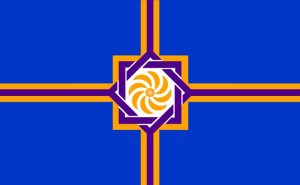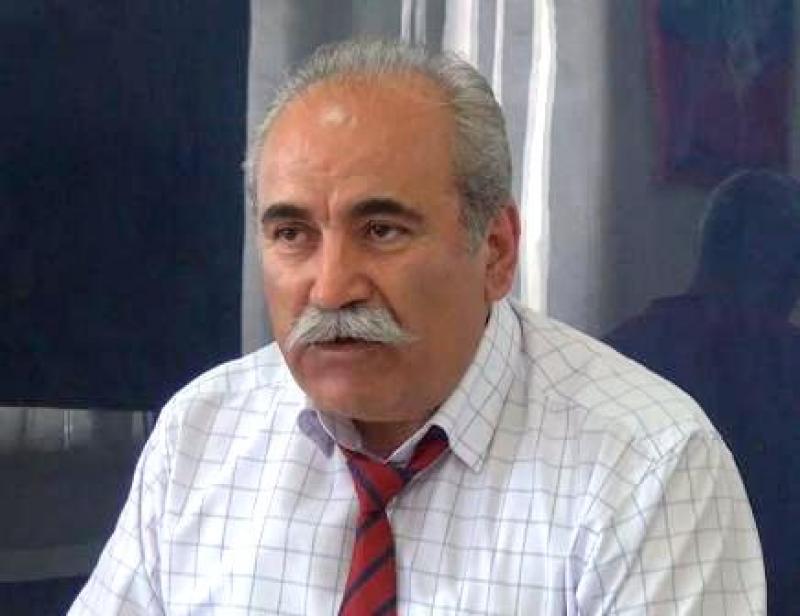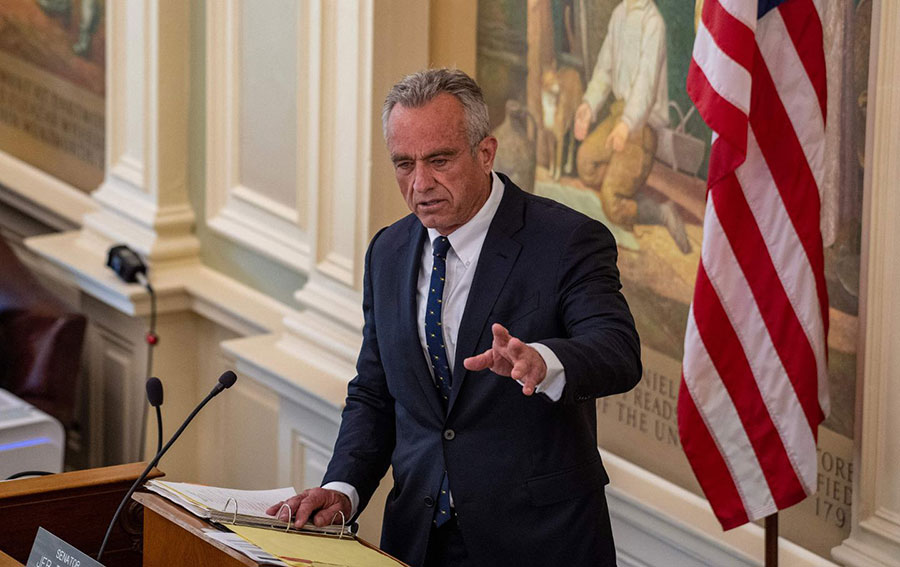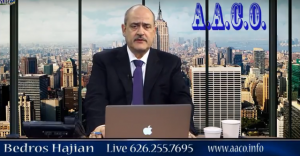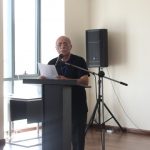STATEMENT
About the strategy of the State of Western Armenia (Armenia) on the Genocide of the Armenians recognition, condemnation and compensation issues
(updated version)
Western Armenia’s strategy on the Genocide of the Armenians recognition, condemnation and compensation issues is built on the exact answers on the following questions:
- The Genocide of the Armenians was condemned in 1896, 1909, 1915, 1919. How the Genocide of the Armenians recognition and condemnation issues arose again?
- When the Genocide of the Armenians was carried out, which years, by whom and what is the chronology of the Genocide of the Armenians, 1915-1923 or 1894-1923.
- What is the damage to Armenians and Armenia caused by the genocide, whether that damage was assessed, are there any calculations, in other words, is there a complete package for the calculation of compensation for damage.
I. Time of condemnation of the Armenian Genocide.
The international community after the Lausanne Conference during 1923–1965 the problem of the Armenian Genocide was skillfully bypassed and consigned to oblivion.
It was possible to destroy the wall of oblivion in 1965, during the days when the 50th anniversary of the Armenian Genocide was celebrated, during rallies and movements that broke out in Soviet Armenia, the participants of which demanded compensation and the return of Armenian territories. And especially in the course of the national liberation struggle that unfolded abroad, thanks to the great efforts and at the cost of huge sacrifices of a number of Armenian organizations and individuals, such as: Gurgen Yanikyan, Gevorg Ajemyan, Simon Simonyan, “Armenian Secret Army for the Liberation of Armenia”, “Fighters for a Just Recognition Armenian Genocide” and others.
1965-1985 were the years of recognition of the Armenian Genocide. It was then, simultaneously with the liberation struggle, that the world media were literally overwhelmed with many reports, facts, interviews, articles, books, TV programs and films about the Armenian people and Armenia, as well as about the Armenian Genocide…
1985 – the beginning of Gorbachev’s perestroika, 1987 – the year of the adoption of the resolution of the European Parliament “On the political solution of the Armenian question”; These events were immediately followed by persecution, pogroms, deportation of citizens of Armenian nationality living in Sumgayit, Baku, Gandzak and other cities, as well as the aggression unleashed by the Republic of Azerbaijan against the NKR and the RA.
The second stage of the national liberation struggle of the new period is the Artsakh liberation struggle of 1988-1994, after the victorious end of which, by right, the period of condemnation of the Armenian Genocide and compensation for it should have come, especially since we, as a whole nation, resisted a new attempt to organize Armenian Genocide.
And although precious time has been lost, however, not all is lost.
It is simply necessary to recognize that the process of international recognition of the Armenian Genocide imposed on the Armenians is over, and it is necessary to move on to the process of international condemnation of the Armenian Genocide and compensation for it.
II. The period of the implementation of the Armenian Genocide and the condemnation of the Genocide.
The Armenian Genocide was carried out during 1894–1923. from the three successive governments of Turkey: the Sultan, the Young Turks and the Kemalists, and later the republican․ Carried out in the Ottoman Empire, Western Armenia, Cilicia, Eastern Armenia, Baku, Shushi…
The genocide continued to be carried out in 1918-2016 by successive governments of the three republics of Azerbaijan – in Azerbaijan, Artsakh, Nakhichevan and other Armenian territories.
To this day, the governments of Turkey and Azerbaijan are pursuing a policy of the Armenian Genocide, Armenophobia, persecution, destruction of the cultural and civilizational values of Armenia, as well as falsification and appropriation of Armenian cultural values.
Moreover, the same policy of state terrorism is applied to other ancient peoples of the Greater Middle East – Greeks, Assyrians, Talysh, etc.
- The Armenian Genocide was carried out in 1894-1923 successive Turkish governments: sultans, Young Turks, Kemalists. The genocide was carried out in the Ottoman Empire, including in Western Armenia, Cilician Armenia, as well as in Eastern Armenia, Baku, Shushi and other adjacent areas populated by Armenians.
- 1894-96 period: Sultan Abdul Hamid II organized the massacres and killed nearly 300 thousands of Armenians, 200 thousands were forced to religious conversion, 100 thousand Armenians were deported. The massacre of Armenians was carried out by the Turkish regular army, “hamidie” regiments, police and the Muslim mob.
- Turkish policy of forced religious conversion during Hamid massacres of Armenians became the basis for starting the policy of islamization and continuation a more brutal manner.
- 1894-96 period: Hamid massacres and killings had been condemned by the leading figures of that time Jean Jaurиs, Victor Berare, Anatole France, Johannes Lepsius, Lynch and others.
- 1909 year: Adana massacres handwriting was the same, as the Turkish government organized, carried out by a nationalist mob, and the Turkish army took part in. Nearly 30 thousand people were killed during Adana massacres. The Young Turks organized a trial related to the fact of genocide, but it was a mere formality. Moreover, through the artificially administered fire they tried to destroy the documents, related to that trial, but even though many items were saved and preserved to these days.
- On April 24, 1915, with the arrest of the Armenian intelligentsia in Constantinople, the largest wave of the Armenian Genocide began, which continued until 1923 and, in fact, it has not ended until today. As a result of the Armenian Genocide of 1915-1918. over 1.5 million Armenians were killed and 500,000 deported. Many became refugees and exiles.
- 1915 year: On May 24th, the governments of England, France and Russia came up with special joint declaration, where three large countries publicly characterize the Turkish actions against Armenians as crimes against “humanity and civilization” for which “personal responsibility is laid on every member of the Turkish government who participated in the carnages”.
- The Ottoman Empire, which committed the Armenian Genocide, was one of the first to recognize and condemn it. 1919 year: Constantinople’s military court the trial of Ottoman Turkey ruling elite took place with the following accusations of Young Turk leaders for: a) Involvement of the Ottoman Empire in the First World War, b) Organization and implementation of Armenian’s of the Ottoman Empire comprehensive homicide and deportations. The court sentenced in absentia to death many of the Young Turk leaders, including Talaat, Enver, Jemal and Nazim, Kemal Bey, Cemal Azmin and Naim Bey, Behaeddin Shakir, which in future was implemented by Nemesis Armenian avengers.
- The Armenian Genocide was recognized and condemned by 40 states, several UN committees (1985), the Council of Europe (1998, 2001), the European Parliament (1987, 2000, 2002, 2015) ), World Council of Churches (1983). Permanent Tribunal of the Nations (1984), 49th of the 50 states of the USA, etc.
These facts indicate that using the provisions of the Sevres Treaty and Wilson’s Arbitral Award the compensation for damage of the genocide of Armenians and Armenia, as well as the caused material damage compensation had been decided, signed, ratified, however, had never been realized.
Moreover, after 1923 everything was deliberately forgotten.
III. Question of the chronology of the Armenian Genocide: 1915–1923 or 1894–1923?
In this issue, from a legal point of view, it is important to indicate in what period of time and by whom the Armenian Genocide was carried out. From this point of view, the wording is unacceptable – in 1915-1923.
The wording and dating is correct and historical facts prove the wording and dating – in 1894-1923, since three or more successive Turkish governments – Ottoman, Young Turk and Kemalist – carried out the same actions to exterminate the Armenians.
It is necessary to mention also committed in 1894-96. Abdul Hamid II, the massacre (the so-called Hamid pogroms) and the massacre of Armenians in Adana organized in 1909 by the Young Turks, which are also components of the Armenian Genocide. We have no legal, political or moral right to disregard these facts and consign all this to oblivion, especially since these events are extremely important in the general link of future steps to resolve the Armenian issue – the issue of returning the Armenian territories and restoring the historical justice.
IV. Crimes committed by successive governments of Turkey against the Armenian people, humanity and civilization, at least over the past 100 years.
To get an idea of the total damage inflicted on Armenians during the Armenian Genocide, one must remember the crimes against humanity and Armenians committed during 1894-1923. by three alternating Turkish governments: Sultan, Young Turk and Kemalist.
Let’s just list them.
- National superiority and arrogance, racism, formation of Pan-Turkism, its dissemination and advocacy in Turkish environment.
- Development, dissemination and propaganda of the plans and ideas to exile Armenians and carry out the genocide of Armenians.
- During 1894-23 period in the Armenian Highland, on the Ottoman Empire’s territory, the planning, advocacy, preparation, proviking and carrying out the genocide of Armenians, embezzlement and plunder of their property. Destruction of more than two millions of Armenians, over half a million deportations from their cradle of homeland.
- In 1915 and in subsequent years implementation of the massacres and genocide, theft and misappropriation of their property together with Armenians also Assyrians, Greeks, Arabs (later since the mid of 1920s Kurds as well).
- In 1918 aggression towards the Armenians of Western Armenia, forcing the newly imposed Republic of Armenia to sign illegal contract.
- In 1918 carrying out the genocide of Armenians in Baku
- In 1920 the pogroms of the Armenians of Shushi, the robbery of their property and the burning of the city.
- At the expense of the rights of the Armenian people, on March 3, 1918, the Brest Agreement was signed between the Federal Socialist Republic of Russia on the one hand and the governments of Germany, Austria-Hungary, Bulgaria and the Ottoman Empire on the other. Under this treaty, Russia transferred Western Armenia and a significant part of Eastern Armenia to Turkey. According to the agreement, Russia disbanded the Armenian volunteer regiments and withdrew troops from Armenia. The so-called illegal Moscow Treaty signed on March 16, 1921 between the Government of the Russian Socialist Federative Soviet Republic and the Grand National Assembly of Turkey was, in fact, a continuation of the Brest Supplementary Treaty and its “ratification”. The above-mentioned treaties actually flagrantly violated the basic provisions of international law, since they were signed as a result of aggression and coercion.
- In 1920 the aggression against the Republic of Armenia, later with forcing to sign illegal and illegitimate treaties (1920, in Alexandropol and 1921 in Moscow) to the party subjected to aggression.
- In 1937 carrying out the genocide and killings of Armenians in Dersim.
- September 1955: massacres of Greeks and Armenians in Constantinople, genocide, plunder of Greek and Armenian property. According to official figures, оn September 11, 11 people were killed, while the Armenian and Greek communities indicate different numbers: 37 killed, 300 raped women, 71 churches, 3 houses for editing newspapers, 4,500 workshops and shops, 26 schools, 2,100 houses and apartments were destroyed.
- 1974, the occupation of the northern territories of the Republic of Cyprus, the mass killings of local Greeks and Armenians, genocide, deportation, looting of property.
- In 1894-1923, 1923-2014. destruction, destruction of Armenian civilizational values, including historical and architectural monuments, churches and cross-stones (memorial cross-stones). According to official figures, by the beginning of 1914, the total number of churches and monasteries in Western Armenia and the Ottoman Empire was 2549 (including unique early Christian monuments of the IV-V centuries), most of which were robbed, burned and destroyed during the Genocide. According to UNESCO in 1974, after 1923 out of 913 preserved Armenian historical and architectural monuments, 464 were completely destroyed, 252 are in ruins, 197 need to be rebuilt. And today there is almost nothing to restore – the government of the Republic of Turkey systematically destroyed them.
- Falsification of history, culture and civilization values of Armenians and other nations in the region.
- Denial of the historical fact and reality of the Genocide of the Armenians, with unrealistic expectations to gain the time and postpone the suggestion to create of a commission of historians.
- Occupation of the territory allotted by Wilson’s Arbitral Award, dated November 22, 1920.
- Illegal blockade of Armenia since 1993.
Crimes committed by the authorities of the Republic of Azerbaijan against Armenians, other peoples of the region, against humanity and civilization are a copy of the handwriting and program of the authorities of the Republic of Turkey.
V. Crimes committed by the changing governments of the Republic of Azerbaijan against the Armenian people, against humanity and civilization, over the past 100 years, are a copy of the handwriting and program of the changing governments of the Republic of Turkey. We cannot cover a longer time interval, since an artificial state called Azerbaijan was created in 1918 year.
- Participation in riots against Armenians in the Caucasus in 1905-1906, the persecution and murder of Armenians, the seizure of their property.
- Participation in the massacre of Baku Armenians by Turkish troops in 1918, the theft of their property.
- 1918-1921 – armed attacks and violence against the Armenian population of Karabakh, Nakhichevan, Zangezur, aggression against the Republic of Armenia, groundless territorial claims, the spread of instability in the region.
- The massacre of the Armenian population of Shushi in 1920, the arson of the city, the theft of property of the Armenians of the city.
- The adoption of an illegal decision on the accession of Artsakh to Azerbaijan. On July 5, 1921, at a meeting of the Caucasian Bureau of the Communist Party of Russia, without taking into account the relevant decision of the League of Nations and the opinion of the people of Artsakh as a democratic instrument for demarcating the borders between Soviet Armenia and Soviet Azerbaijan, in violation of the resolution on accession, as a result of procedural violations, it was adopted a decision on the forcible separation of Artsakh from Armenia, subject to the formation of national autonomy with broad powers within Soviet Azerbaijan. Thus, most of the historical Armenian and Armenian-populated areas were transferred to Soviet Azerbaijan.
- The signing of the illegal Moscow Treaty in 1921, the annexation of the Nakhichevan region under the guise of the name of guardianship. The occupation and exploitation of the Nakhichevan region, the crimes and persecution of the indigenous Armenians of Nakhichevan and, finally, the emigration of Nakhichevan Armenians.
- 1921-1988 – occupation and exploitation of the Nagorno-Karabakh Republic, crimes against Armenians of Artsakh.
- 1930s up to today – the forced assimilation of the peoples living in Azerbaijan, Nakhichevan and Artsakh – Armenians, Udi, Talyshevs, Tats, Avars, Lezgins, and many of them have committed acts of genocide.
- 1960s up to now – falsification of the history and culture of the peoples of the region, in particular Armenians, the destruction or appropriation of civilizational, historical and architectural values.
- 1988 — any manifestation of the will and right of Armenians of Artsakh to live freely and freely develop was suppressed by mass killings, persecution, intimidation, imprisonment of Armenians.
- The shameful looting of building materials intended for the restoration of the Spitak earthquake in 1988, as well as humanitarian aid collected for the disaster zone.
- 1988-1990, Genocide and deportation of the Armenian population of Azerbaijan, robbery of property.
- 1991-1994 – large-scale aggression against the NKR and the border regions of the Republic of Armenia.
- The Republic of Azerbaijan is a state whose government has destroyed and continues to destroy many ancient Armenian monuments, churches and the cultural heritage of the Armenian people. Evidence of all this is the destruction of 89 medieval Armenian churches, 5480 khachkars and 22,700 burials located in the Armenian territories of Azerbaijan, Artsakh and Nakhchivan, including 400 khachkars in Agulis and the destruction of thousands of medieval original and ancient khachkars in the city of Dzhuga in the Nakhchivan region in 2005 year.
- April 2016 — the outbreak of a four-day war and aggression against the Armenians of Artsakh and the Republic of Artsakh, the commission of new war crimes.
- 1988-2019 blockade of NKR, RA, obstruction of the right to free development, blockade.
- The period 1988-2019. – Under conditions of weak control of the international community, the Republic of Azerbaijan is building up its military potential, surpassing and violating all established permissible weapons standards, inciting to regional instability.
- The authorities of the Republic of Azerbaijan sow Armenophobia, xenophobia, racism, incite blind ethnic hatred, propaganda and preparation for new wars and genocide, especially among the younger generation.
VI. Final remarks:
This is not a complete list of crimes against humanity and against the Armenian people committed by the successive governments of Turkey and Azerbaijan over the past hundred years.
To all this, we add that the calculation of the amount of damage inflicted on the Armenian people, as well as the assessment and calculation of the total damage inflicted on the Armenian people and Armenia as a result of other crimes after 1923, has not yet been carried out.
However, the crimes listed above directly indicate the losses that can and should be calculated and thus prepare a complete package of the true amount of compensation for the damage caused to the Armenian people and Armenia as a result of the Armenian Genocide.
One more important remark as a final word.
The massacre and deportation of Armenians committed in the period 1894 – 1923. are Genocide according to the United Nations Convention on the Prevention and Punishment of the Crime of Genocide of December 9, 1948. The Armenian Genocide is subject to condemnation in accordance with the UN Convention on the non-applicability of the statute of limitations to war crimes and crimes against humanity, dated November 26, 1968.
There is every reason to believe that the Armenian Genocide continues to this day, and will continue until this crime is condemned and compensation for damage is not carried out, and until the Armenians have created political, legal and national-state firm and unshakable foundations to ensure the realization of their right to life, development and progress.
The decision on this application was made on 19/10/2014 at the 2nd session of the 1st convocation of the National Assembly (Parliament) of Western Armenia.
Updates were made on 09/04/2019 at a joint meeting of the Government and the National Assembly (Parliament) of the 2nd convocation of Western Armenia.
Armen Ter-Sarkisyan
President of the National Assembly (Parliament) of Western Armenia
19/10/2014 – 04/09/2019

